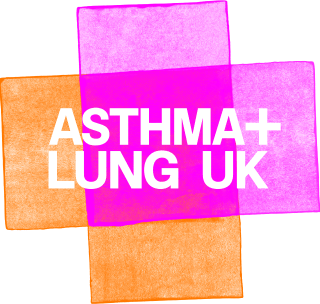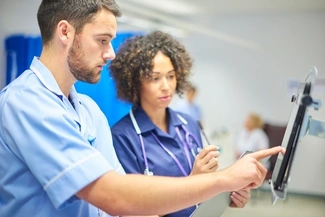Here we provide information about how your child’s lungs grow and develop. We explain how lungs develop in the womb and how they continue to grow after birth and through childhood.
On this page:
- How lungs grow in the womb
- Your baby’s first breath
- How lungs grow after birth
- When will my child’s lungs be fully grown?
- Looking after your child’s lungs
How lungs grow in the womb
Your child’s lungs develop in five stages. The first four stages happen in the womb, and the final stage finishes in late childhood or the early teenage years. The stages of development always happen in the same order, but the exact timings can be different for everyone.
Do babies breathe in the womb?
Before your baby is born, their lungs are filled with fluid. They get oxygen from the mother’s blood through the placenta.
The fluid in the womb lets your baby’s lungs develop and mature, ready for birth. They will take their first breath of air when they are born.
Stage 1: After conception
The first stage of your baby’s lung development usually happens at 3-5 weeks during pregnancy. At five weeks, your baby is just 2mm long, but major organs are already beginning to form.
A lung bud starts developing from a small tube of cells called the foregut (which also goes on to form the gut). This bud separates into two. Later on, the lungs separate from the gut.
These two buds will eventually go on to become your baby’s right and left lungs. Your baby will then start to make lung movements in the womb as if they are practising breathing.
Stage 2: Airways begin to form
The second stage of lung development happens between 5-16 weeks during pregnancy. During this time your baby is growing quickly. The major organs are in place by 12 weeks, and at 14 weeks your baby measures 85mm from head to toe.
Your baby’s lungs will now start to develop the tree-like structure you see in adult lungs. Each lung bud starts to divide again and again, like the branches of a tree.
At first, they form three buds on the right side – these will become the upper, middle, and lower lobes of the right lung. They only form two buds on the left side - the upper and lower lobes of the left lung. Your baby’s right lung will be bigger because the left lung has to share space with the baby’s heart. This is the same for almost everyone.
These buds continue to divide throughout this stage. They may divide up to 20 times.
By 16 weeks your baby’s lungs have all of their main airways (bronchi) and smaller airways (bronchioles). Cells that will eventually become the tiny air sacs (alveoli) have started to appear at the end of these smaller airways, like buds on trees.
Stage 3: Getting ready to form air sacs and blood vessels
Stage three takes place from 16-26 weeks during pregnancy. Your baby starts to develop the areas where air sacs and blood vessels will form, at the end of the smallest airways. These air sacs will be needed to get oxygen into their blood when they breathe outside the womb.
The cells that will become air sacs carry on developing even after your baby is born. Small blood vessels called capillaries grow close to these cells.
If a baby is born prematurely
A baby born before 32 weeks of pregnancy won’t have strong enough lungs to breathe on their own yet. They may be put on a breathing machine to help them breathe. We have more information about babies who are born premature.
Stage 4: Preparing the lungs for breathing
This stage of development begins at 26 weeks and carries on until birth. In this stage, the end of the smallest airways (now called saccules) grow in size. They will eventually develop into early alveoli (air sacs).
The walls of these saccules get thinner to make more room for air in your baby’s lungs.
A mixture of fats and proteins begin to form at this stage – these are called surfactants. They help make sure the air sacs expand more easily and won’t collapse at the end of each breath out.
Stage 5: Air sac development
Stage five of lung development starts at 32 weeks and continues after birth into childhood. In the last few weeks of pregnancy, the first air sacs (alveoli) develop.
More surfactants (fats and proteins) are produced as the lungs carry on developing. The lungs develop and grow to enable oxygen to get into the blood. This prepares your baby’s lungs to breathe outside the womb.
Your baby’s first breath
When a foetus (unborn baby) is in the womb, their lungs are filled with fluid, and they get oxygen through the umbilical cord. As soon as your baby is born, they need to start using their lungs to breathe and get oxygen from the air.
Their first breath can take up to 30 seconds after birth. The breath sounds like a gasp as the baby reacts to sudden changes in temperature and environment.
As a baby takes their first breath, the blood vessels around the lungs get wider and the blood flows to the lungs to collect oxygen. The fluid drains and the lungs begin to inflate and work on their own.
How lungs grow after birth
Your baby has around 20-50 million air sacs at birth. This number will increase rapidly until they are two years old.
By the time your child is three, their lungs look like a mini version of adult lungs. The airways and lungs expand in size as your child grows taller, filling their rib cage.
When will my child’s lungs be fully grown?
Your child’s lungs get bigger as they grow. All their airways and air sacs increase in size and volume. Volume is the amount of air your child’s lungs can hold.
The exact size and volume of the lungs will vary from child to child. There is evidence to say that new air sacs keep developing throughout childhood and into the teenage years. Fully grown, adult lungs have around 300 million air sacs.
Looking after your child’s lungs
It’s important to look after your baby’s lung health while the lungs are still developing.
Some lung problems can be caused by genetics or premature birth, and other problems can be caused by passive smoking, diet, and pollution. We have lots more information about the risks to children’s lungs, as well as how to protect children’s lungs.






